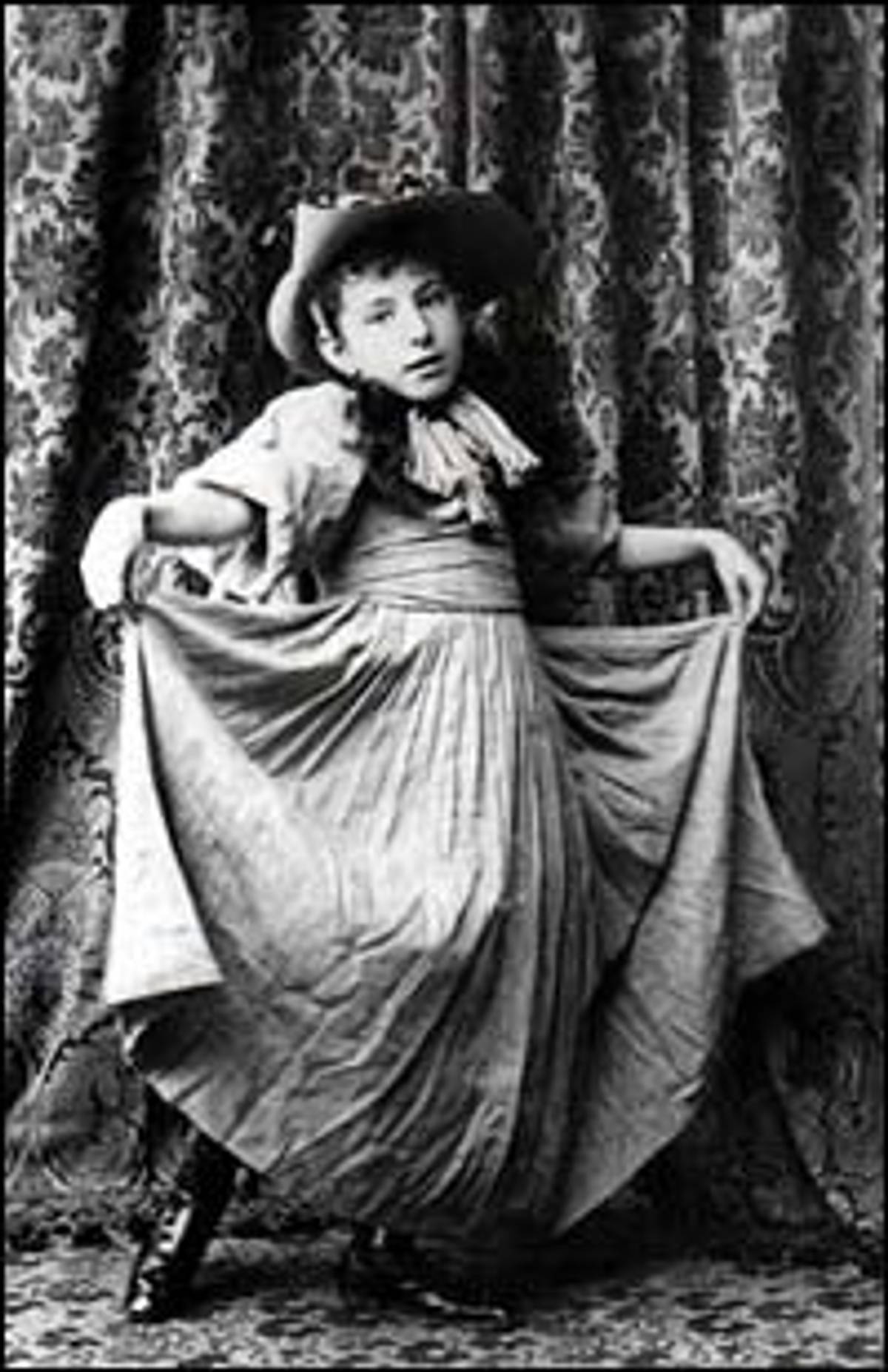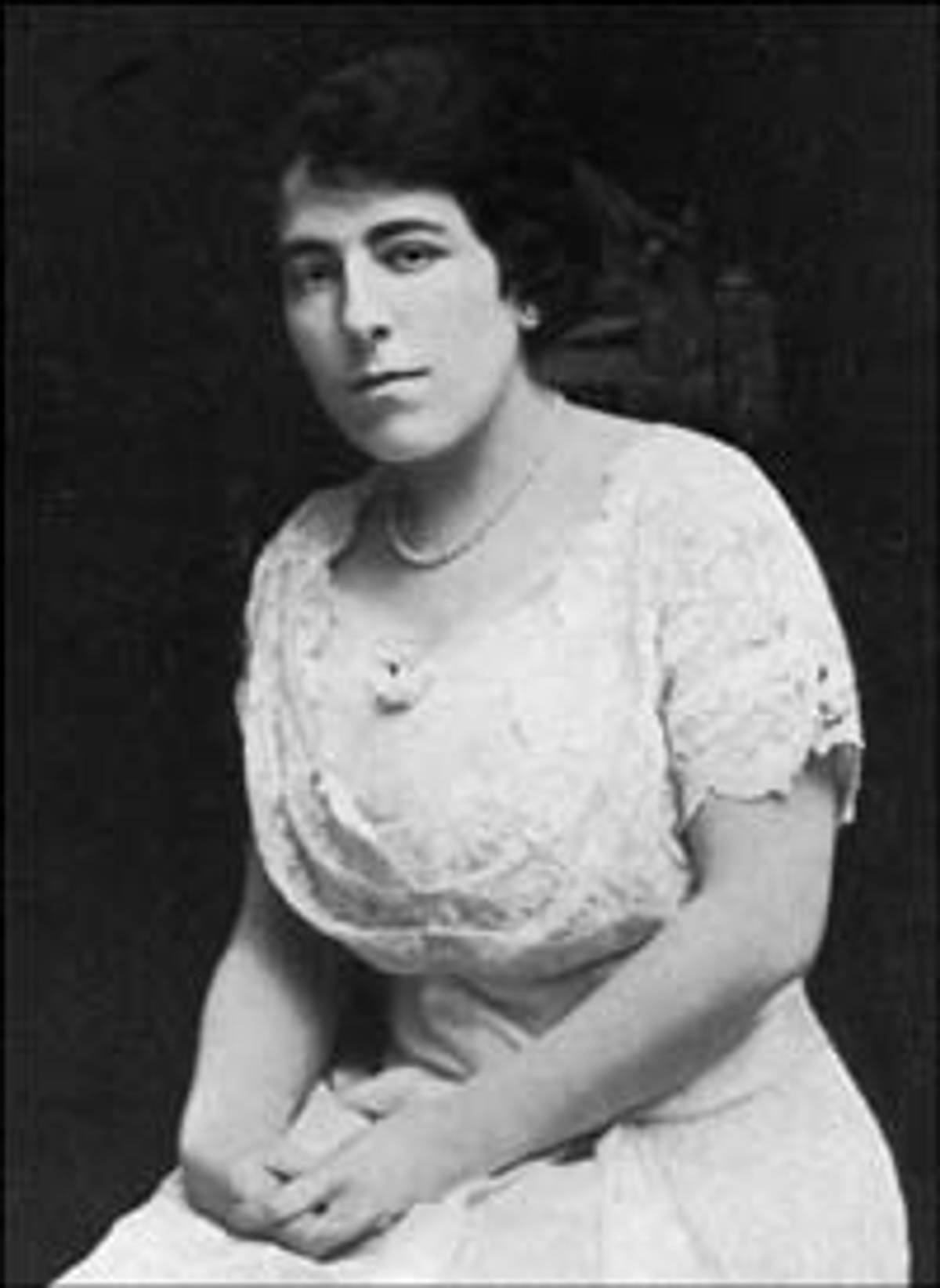Edna Ferber was one of the 20th century’s most prolific and widely read writers. Ten of her 12 novels were adapted into films—some more than once, like her 1924 Pulitzer Prize-winner, So Big—and between novels she managed to produce seven plays, 11 volumes of short stories, and two memoirs. She socialized with members of the Algonquin Round Table and Teddy Roosevelt, who offered her plot advice. In her 1963 autobiography, A Kind of Magic, she boasted that her novels would be “read in the next fifty years by another four generations.” Yet today, when Ferber’s work is remembered at all, it is generally thought of only as the source material for classic films like Giant, Cimarron, and Show Boat, the novel of which has just been re-issued in a handsome facsimile of the 1926 first edition. Her most recent endorsement came from First Lady Laura Bush, who featured Ferber in a 2002 White House symposium on Western women writers, and that didn’t exactly put So Big back on the bestseller list.

Perhaps this neglect is fitting for a writer whose most memorable characters were loners and underappreciated visionaries. Despite her wealth and success, Ferber, born in Kalamazoo, Michigan, always felt herself an outsider: “Though now I live in the City of Sophistication, I’ll never be more than an onlooker in it,” she wrote from New York City in the 1920s. “And when it comes to writing I turn back to the town with a little human awkwardness left in it.”
The study of human awkwardness, in its uniquely American forms, was at the heart of Ferber’s work. Her novels followed a basic formula: A resourceful, attractive young woman is forced to seek her fortune in a mildly hostile environment, usually due to unfortunate family circumstances that often mirrored the events of Ferber’s own life. She was born in 1885 to a second-generation German mother, Julia, and a Hungarian immigrant father, Jacob, who ran an unsuccessful general store. When Edna was 5 years old, the family settled in Ottumwa, Iowa, where, in her 1938 autobiography, A Peculiar Treasure, Ferber recalled being taunted as a “sheeny” by children and adults alike. She refused to play victim, but she never forgot the sting of discrimination. “My other cheek was all worn out long before I grew up,” she wrote in her notes for A Peculiar Treasure. In 1897, they moved to Appleton, Wisconsin, and when Jacob’s eyesight began to deteriorate, the indomitable Julia took over management of the store. Growing up in such a household shaped Ferber’s personal life as well as her plots; she never married, and romance in her novels is a mixed blessing at best.
After graduating from high school in 1903, the 17-year-old became the first female reporter for her hometown paper, the Appleton Crescent, and soon advanced to the payroll of the Milwaukee Journal. A nervous breakdown ended her career in journalism, but in 1911, while convalescing in Chicago (where she had moved with her mother and sister after Jacob Ferber’s death in 1909), she began writing fiction in earnest. She quickly discovered she could support herself and her family by publishing her work in magazines like American, Everybody’s, and Cosmopolitan. Such short stories were a major form of middlebrow entertainment, especially for women, and Ferber’s plucky heroines were a hit with readers. Intrigued by the previously unacknowledged phenomenon of the American businesswoman, she created Emma McChesney, a single mother and traveling petticoat saleswoman, and struck gold. Unapologetically modern and independent, Emma embodies Ferber’s standout qualities as they might have developed under more generally favorable circumstances—she is well-traveled rather than provincial, beautiful rather than plain, and indeterminately Gentile rather than Jewish.
“All my life I have been proud of being a Jew,” Ferber once wrote. “But I have felt that one should definitely not brag about it.” She generally disdained the practice of autobiographical fiction, which to her seemed “akin to the case of the strange insect that eats itself for nourishment.” Yet, in 1916, after filling three volumes with stories starring the character she called “Emma McChestnut,” Ferber worried she was “sliding to oblivion.” Hoping to cross over into serious fiction, she focused on her own coming-of-age and Jewish heritage in her second novel, the plainly autobiographical Fanny Herself, published in 1917.
In Fanny Herself, Ferber tells her own story directly, without the fictional embellishments—lavish settings, epic casts—for which she later became known. When Fanny Brandeis, the heroine, leaves her Wisconsin hometown to make her fortune, she resolves to enter the working world no differently than “any other ambitious woman with brains.” She dismisses the idea that her religion might be a handicap: As she explains to her brother, “Antagonism [in the United States] isn’t religious…The struggle isn’t racial anymore, but personal. For some reason or other one flashy, loud-talking Hebrew in a restaurant can cause more ill feeling than ten thousand of them holding a religious mass meeting in Union Square.” If individual Jews find their heritage a handicap, she seems to say, it must be because they embody the worst aspects of the commonly held stereotype, rather than the best.
Fanny possesses a natural ability for caricature, supposedly born of her Jewish sensitivity to suffering, but she declines to develop this gift, preferring the dependability of the business world. Her pursuit of mammon makes her such a colorless character that even the narrator complains, “Fanny Brandeis begins to lose interest for me. Big Business seems to dwarf the finer things in her…It is the penalty they pay who, given genius, sympathy, and understanding as their birthright, trade them for the tawdry trinkets money brings.”
Ferber must have hoped Fanny was her chance to turn away from “tawdry trinkets,” but the book was not embraced by her reading public. According to Ferber’s biographer (and great-niece), Julie Goldsmith Gilbert, “The critics realized that it was semiautobiographical, and gave it sweet, understanding, and rather patronizing reviews.” In later years, as she refined her fiction-writing formula and found a marketable balance between literary ambition and McChesney-esque popular appeal, Ferber dismissed Fanny as “rather groping and juvenile”—too reliant on self-revelation to be truly great.
A disdainful passage in Fanny scoffs at the habits of the “Greenwichers,” New York writers who “spend hours talking to each other, in dim-lighted attics, about Souls, and Society, and the Joy of Life, and the Greater Good…They talk themselves out, and there’s nothing left to write about.” But as Ferber’s stories attracted more critical attention, she found herself splitting her time between Chicago and New York. In the mid-1920s, tired of her itinerant lifestyle, Ferber took an apartment in New York City, and before long she was trading quips with the Greenwichers themselves at the Algonquin Hotel. George S. Kaufman had expressed an interest in one of her short stories, and she agreed to help turn it into a play. Their partnership produced several hit comedies (including Dinner at Eight and Stage Door), though Edna only made occasional appearances at the Algonquin—her long working hours left little time for liquid lunches. “She had the habit of industry,” sniffed society columnist Franklin P. Adams.

In her public life Ferber often credited her success to her Jewish heritage. When, in the mid-1920s, a dinner hostess asked, “Oh, are you Jewish?” Ferber answered coolly, “Only on my mother’s and father’s side.” In A Peculiar Treasure—the title is taken from Exodus— she eloquently expresses her horror at the rise of Nazism, and a chapter in the 1963 follow-up describes her tour of Israel. But in her speeches promoting war bonds during World War II, she criticized the “Narcicus[sic]-like” tendency of Jewish writers to focus on their own trials: “Once [the Jew] begins to write about himself or preach about himself, he feels sorry for himself. This trait is one which the world does not find endearing.”
Although, after Fanny, Ferber refrained from writing about the kind of discrimination she knew best, her “love of justice” still fueled her fictional imagination. In later years, she became known for her novels about America’s many insular worlds. For contemporary audiences her novels were a form of educational escapism, often vilified in the communities in which they were set (Oklahomans hated Cimarron; Texans reviled Giant) but embraced everywhere else. Today these novels seem dated, partly because of their author’s vaudeville-era tolerance for ethnic stereotypes; but cringe-worthy caricatures like Show Boat‘s “black men…with rolling eyes and great lips” exist alongside some very thoughtful explorations of American racism, including Show Boat‘s sympathetic treatment of a mixed-race couple and Giant‘s portrayal of impoverished and exploited Mexican laborers.
Fidelity to the artist’s “birthright”—the focus of Fanny‘s narrator—arises again and again as a theme in Ferber’s novels: So Big tells the story of a hardscrabble farm woman and her materialistic son, but its true hero is a minor character who abandons the family farm to develop his talent for sculpture. Giant lavishes much sympathy on poor Uncle Bawley, forced to sacrifice a career as a pianist for a life of cattle-rustling. But only in Fanny Herself does Ferber link creative instincts to Jewishness. Fanny’s hometown beau—grown into a New York newspaper columnist—chastises her for abandoning her art: “You were a person set apart in Winnebago. Instead of thanking God for that, you set out to be something you aren’t. No, it’s worse than that. You’re trying not to be what you are.” For Ferber, the experience of being “a person set apart”—what some might call discrimination—is only a handicap if one fails to appreciate its advantages.
Like Fanny Brandeis, Ferber boasted a gift for caricature that was born of her being “set apart.” She lived up to the challenge she set forth in Fanny Herself—she embraced the “genius, sympathy, and understanding” that were her “birthright,” and she demanded success on her own terms. By all accounts she was a difficult woman (her biographer niece calls her “a surprisingly well-adjusted megalomaniac”) who always remained an outsider, never glamorous enough to become a legend and always too popular to be considered a “serious” writer. Although she discussed Judaism at length in her nonfiction writing, its absence from her novels has left her outside discussions of Jewish-American literature. And as her stories found new life in the medium of film, her books stayed stubbornly rooted in their own time.
Throughout her career, Ferber attempted to capture the broadness of the American experience by focusing on specific pockets of American society, and rarely her own. “Only once have I deliberately taken a small section of my own life as the subject of a book,” she wrote in A Peculiar Treasure, referring to Fanny Herself. Thereafter she devoted herself to investigating the foreign worlds she found within her own country and making them come alive for her readers. But in 1938, the persecution of German Jews and the complacency of her own country drove her once again “to write honestly and informatively about a family of middle-class Jews in the United States of America.” This time she saw the result, her memoir, as “really a story about the America which I know and love,” a story that was just as validly American as anyone else’s.